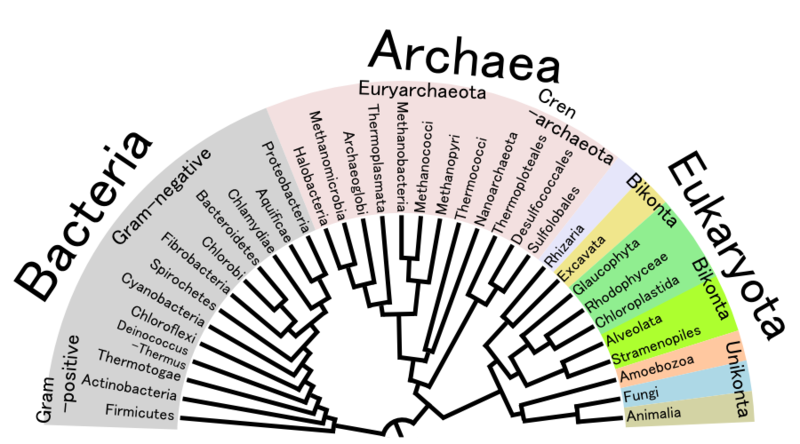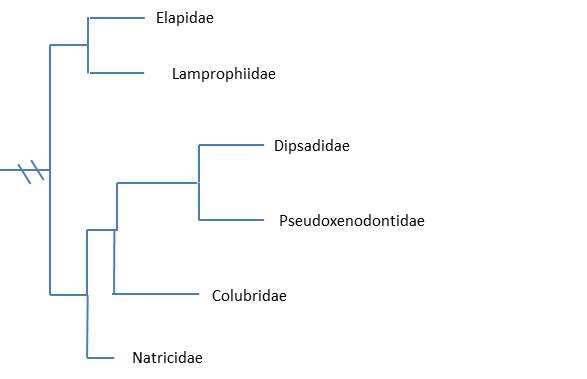
Classification
Classification is organized into tiers, with each descending
category becoming more specific to the organism. This is the
classification for the Black Mamba:
Domain: Eukarya
This domain is one of three domains, and contains all organisms
exhibiting membrane bound organelles, a true nucleus and linear
chromosomes.

Photo courtesy of Wikipedia Commons,
https://commons.wikimedia.org/wiki/File:Phylogenetic_Tree_of_Life.png
Kingdom: Animalia
The Black Mamba is in the kingdom animalia which contains all
eukaryotic organisms that lack a cell wall, can’t produce their
own food, are motile at some point in their life cycle, and have
flat mitochondrial cristae.
Phylum: Chordata
The phylum chordata contains all animals with five unique
characteristics: at some point in their life cycle they will
exhibit a notochord,
a dorsal nerve chord, pharyngeal gill slits, an endostyle, and a
postnatal tail. To learn about another
group in the chordata, click
here.
Class: Reptilia
The phylum reptilia contains all chordates that are cold
blooded, have scales, and lay shelled eggs.
Order: Squamata
The order Squamata contains all reptiles that have horned scales
and exhibit quadrate bones, which allow the upper jaw to be more
mobile.
Suborder: Serpentes
The suborder Serpentes contains all Squamates that are legless,
and lack eyelids and external ears. Their more common name is
snakes. To learn more about another order in reptilia, the lizards,
click
here or
here.

Photo Courtesy of Sapphiren,
http://www.flickr.com/photos/18161462@N00/346548232/
Family: Elapidae
The family Elapidae contains all serpents that are proteroglyphs.
Proteroglyphs are a specialized snake that have fangs fixed
towards the anterior of their mouth. All members in this family
are venomous. To learn more about another family of
snakes, click
here.
Genus: Dendroaspis
The genus Dendroaspis contains all the species of mambas. There
is the Eastern Green Mamba (Dendroaspis angusticeps), the
Western Green Mamba (Dendroaspis viridis), Jameson’s Mamba (Dendroaspis
jamesoni), and the Black Mamba (Dendroaspis polylepis).
Species: Dendroaspis polylepis
The species Dendroaspis polylepis is commonly known as the
black
mamba. You can learn more about this venomous snake as you read
more!

Derived from
http://scienceblogs.com/tetrapodzoology/2010/09/13/everything-about-bothrolycus/
Continue to Habitat